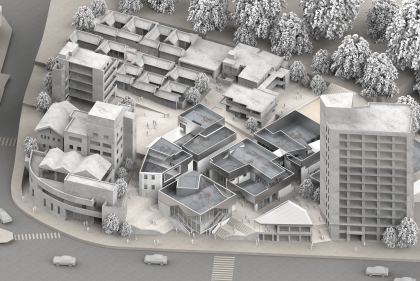White, Black, and Gray-box Modelling
Daikin Open Innovation Lab, Silicon Valley

This paper will briefly review the use of white and black models, which are explored in more detail in the sections by Ravi Srinivasan, Pengyuan Shen, and Nancy Ma. The body of the paper will review gray-box methods as they have been applied to buildings
Close
White, Black, Gray Box ModellingThis paper will briefly review the use of white and black models, which are explored in more detail in the sections by Ravi Srinivasan, Pengyuan Shen, and Nancy Ma. The body of the paper will review gray-box methods as they have been applied to buildings
White and Gray Box ModellingWhite box models are deterministic, physics-based models solved with numerical techniques. They are widely used in the design and analysis of buildings. These are commonly divided into categories by level of complexity: single zone, multiple zone, and computational fluid dynamic models (CFD). The building physics for building energy modelling has been well established since the early 20th century, so the limitation has been computational power and efficiency. A variety of techniques were employed in manual calculations, but with the advent of ready computational power and the increased urgency of the energy crisis in the 1970s, the heat balance method became the dominant approach. For a more detailed history of these methods, see (Oh and Haberl 2016) and (Malkawi and Augenbroe 2004). Gray box models combine a deterministic model with factors to account for the stochasticity of data and are solved with a variety of techniques. As Kissock et al explained, “In the building energy community, models derived from measured energy use are called ‘inverse’ models. The term ‘inverse’ differentiates them from ‘forward’ models in which building energy use is predicted from engineering principles (Kissock, Haberl, and Claridge 2003, 2002).” Inverse methods are also called “estimation and system identification” and are used to identify models that provide a good fit to data and whose parameters also correlate to some physical aspect of the building (Rabl 1988).
Diagram of a single zone Gray Box ModelHere, the interior temperature (T_interior) is the dependent variable. The active heating or cooling (Q_Heating), solar heat gain (Q_solar), the exterior temperature (T_exterior), and the ground temperature (T_ground) are all taken to be independent variables driving the system. A couple of comments, here. It is common to model the ground temperature as a constant value corresponding to the steady state ground temperature about 10 m below the ground. Additionally, the solar heat gain is often modeled as an area (A_s) multiplied by the solar radiation flux (φ_s). This area is sometimes treated as the area of the windows on the building and sometimes as an effective area variable corresponding to the absorptivity of the opaque building surfaces. The thermal resistances correspond to effective envelope (R_interior, exterior) and floor (R_interior, ground) thermal resistances. Finally, each dependent variable, in this case, just the interior temperature, has an associated thermal mass (M_interior).
Heat balance equationThis system can be used to generate a system equation (directly from a heat balance on this system) of the form. Here, 𝑀𝑀 is the mass matrix, 𝑇𝑇𝑖𝑖 is the state vector, 𝑇𝑇𝑜 is the environmental temperature vector, 𝑈𝑈1 is the state coefficient matrix, 𝑈𝑈2 is the environmental temperature coefficient matrix, 𝐴𝐴 is the heating coefficient matrix, and 𝑄𝑄 is the heating matrix.

 View Slideshow
View Slideshow
